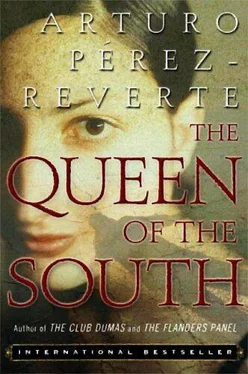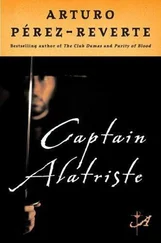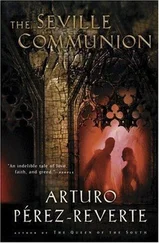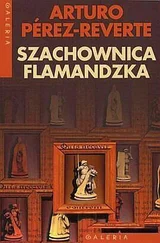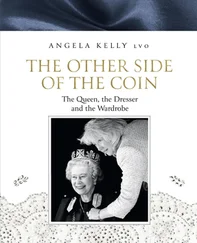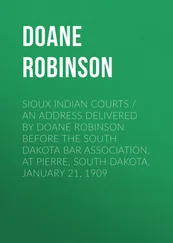Arturo Perez-Reverte - Queen of the South
Здесь есть возможность читать онлайн «Arturo Perez-Reverte - Queen of the South» весь текст электронной книги совершенно бесплатно (целиком полную версию без сокращений). В некоторых случаях можно слушать аудио, скачать через торрент в формате fb2 и присутствует краткое содержание. Жанр: Триллер, на английском языке. Описание произведения, (предисловие) а так же отзывы посетителей доступны на портале библиотеки ЛибКат.
- Название:Queen of the South
- Автор:
- Жанр:
- Год:неизвестен
- ISBN:нет данных
- Рейтинг книги:5 / 5. Голосов: 1
-
Избранное:Добавить в избранное
- Отзывы:
-
Ваша оценка:
- 100
- 1
- 2
- 3
- 4
- 5
Queen of the South: краткое содержание, описание и аннотация
Предлагаем к чтению аннотацию, описание, краткое содержание или предисловие (зависит от того, что написал сам автор книги «Queen of the South»). Если вы не нашли необходимую информацию о книге — напишите в комментариях, мы постараемся отыскать её.
Queen of the South — читать онлайн бесплатно полную книгу (весь текст) целиком
Ниже представлен текст книги, разбитый по страницам. Система сохранения места последней прочитанной страницы, позволяет с удобством читать онлайн бесплатно книгу «Queen of the South», без необходимости каждый раз заново искать на чём Вы остановились. Поставьте закладку, и сможете в любой момент перейти на страницу, на которой закончили чтение.
Интервал:
Закладка:
"Teresa Mendoza," he murmured after a while.
He shook his head as he said this, as though remembering something funny. Then he took a swig of his beer, chewed on a piece of meat, and drank again. He was still looking at me hard from behind the dark glasses, a little sneer on his lips, perhaps, letting me know that he had no problem talking about something so old, and that the risk of asking questions in Sinaloa was entirely mine. Talking about dead men didn't cause problems-the narcocorridos were full of real names and stories; what was dangerous was asking questions about live men, because you might get taken for a bigmouth and a snitch. And I, accepting the rules of the game, looked at the gold anchor-only slightly smaller than the Titanic s-hanging from the thick gold chain that gleamed under the open collar of his plaid shirt, and without beating around the bush asked the question that had been burning my mouth since Elmer Mendoza had pointed this man out to me four days earlier. I asked what I needed to ask, and then I raised my eyes, and the guy was looking at me just like before. Either he likes me, I thought, or I'm going to have problems.
After a few seconds, he took another drink of his beer, still watching me. He must have liked me, because he finally smiled a little, just a hint. "Is this for a novel or a movie?" he asked. I told him I didn't know yet; it could be either, or both. At that, he offered me a beer, went to get another one for himself, and started to tell the story of Guero Davila's two-timing.
He wasn't a bad guy, Guero. Kept his word, a lot of heart-brave, really brave. He was good-looking, a little like Luis Miguel, but thinner- and tougher. Great sense of humor. Easygoing. Raimundo Davila Parra spent money as fast as he made it, or almost, and he was generous with his friends. He and Batman Guemes had been up until dawn lots of nights, partying with music, alcohol, and women, celebrating successful operations. At one time they were even close friends-bro's, or carnales, as the Sinaloans put it. Guero was a Chicano-he'd grown up in San Antonio. And he started young, transporting grass in cars to the U.S. They'd made more than one run together up through Tijuana, Mexicali, or Nogales, until the gringos offered him a stay in a jail up there somewhere.
After that, Guero didn't want anything to do with cars-all he wanted to do was fly. He had a pretty good education, high school anyway, and he took pilot's classes in the old flying school on Zapata. He was a good pilot-the best, Batman Guemes acknowledged, nodding emphatically-one of those that aren't afraid of anything: the right man for clandestine takeoffs and landings on the little hidden runways up in the sierra, or for low-altitude flights to avoid the Hemispheric Radar System that scanned the air routes between Colombia and the U.S. The Cessna was like an extension of his hands and his courage: he would land anywhere and at any hour, and that brought him fame, respect, and green. The guys in Culiacan called him the king of the short runway, and for good reason. He was so famous that Chalino Sanchez, who was also a close buddy of his, promised to write a corrido for him using that exact name-"The King of the Short Runway." But Chalino got taken out before he could do it-Sinaloa was not a healthy place to live, depending on the neighborhood-and Guero never got his song.
Anyway, with or without his corrido, he never lacked for work. His padrino was don Epifanio Vargas, a narco boss who was a veteran of the sierra, a guy with real balls, tough and straight-shooting in every sense of the word. Epifanio Vargas' cover was Nortena de Aviaci6n, a company he owned that sold and leased Cessnas and Piper Comanches and Navajos. And on Nortena's payroll, Guero Davila did runs of two or three hundred kilos, before the big deals of the golden age, when Amado Carrillo earned himself the title Lord of the Skies by organizing the biggest air bridge in the history of drug trafficking between Colombia, Baja California, Sinaloa, Sonora, Chihuahua, and Jalisco. A lot of the missions that Guero flew back in the early days were diversionary-he was a decoy for both the land-based radar screens and those Orions crammed with technology and manned by mixed gringo and Mexican crews. And they were for diversion meaning "fun," too, because he loved it. So he made a fortune risking his skin on flights to the limit, day and night: fancy-as-hell maneuvers, takeoffs and landings on forty feet of runway and in places you wouldn't think a plane could ever manage, diverting attention from the big Boeings, Caravelles, and DC-8s-bought during the period when the cartels were all pooling together-that would transport eight and ten tons in one trip. And all this with the complicity of the police, the Ministry of Defense, and even the President of the Republic. Because those were the good times-the high times-of Carlos Salinas de Gortari, with narcos running drugs under the protection of the presidency itself. They were good times for Guero Davila, too: empty planes, no cargo to be responsible for, playing cat and mouse with adversaries that it wasn't always possible to completely buy off. Flights where you risked your life on a roll of the dice, pure chance whether they popped you or not-or threw your ass in jail for a long stay if they caught you on the gringo side.
Back then, Batman Guemes, who had his feet on the ground figuratively as well as literally, was beginning to do pretty well in the Sinaloa narcomafia. The Mexicans were beginning to declare their independence from the providers in Medellin and Cali, raising the stakes, being paid with greater and greater amounts of coca, and commercializing the Colombian drug that they'd only transported before. That made Batman's rise in the local hierarchy easier, after some bloody settling of scores to stabilize the market and the competition-some days, there would be twelve or fifteen bodies, your side and theirs. He had put as many cops, military men, and politicians on the payroll as possible-including Customs officers on the Mexican side and INS officers, the migras, on the U.S. side-and in a very short time, packages with his trademark, a little bat, started to cross the Rio Grande in eighteen-wheelers. Sometimes hashish, what they called goma de la sierra, rubber from up in the mountains, and sometimes coke or weed-marijuana. There was a song, a corrido they say somebody commissioned from a norteno group on Calle Francisco Villa, and the lyrics summed it up: Vivo de tres animates-mi perico, mi gallo y mi chiva. I make my living from three animals: my parakeet, my rooster, and my goat-which in Mexican slang was coke, marijuana, and heroin.
At about this same time, don Epifanio Vargas, who until then had been Guero Davila's employer, began to specialize in drugs of the future like crystal meth and ecstasy. He had his own laboratories in Sinaloa and Sonora, and also on the other side of the border. "The gringos want to ride," he would say, "I saddle the horse for 'em." In not very many years, and with not many shots fired or trips to the cemetery-practically what you'd call a white-collar operation-Vargas managed to become the first Mexican magnate of precursors for designer drugs like ephedrine, which he could import problem-free from India, China, and Thailand, and one of the main producers of methamphetamines north or south of the border. He also started looking into politics. With legal businesses in plain view and the illegal ones well camouflaged behind a pharmaceutical company with state backing, the cocaine and Nortena de Aviacion were unnecessary. So he sold the airplane
business to Batman Guemes, and with that, Guero Davila got a new boss in the drug-running game. Guero wanted to fly even more than he wanted to make money. By then he'd bought a two-story house in Las Quintas, was driving a brand-new black Bronco instead of the old one, and was living with Teresa Mendoza.
Читать дальшеИнтервал:
Закладка:
Похожие книги на «Queen of the South»
Представляем Вашему вниманию похожие книги на «Queen of the South» списком для выбора. Мы отобрали схожую по названию и смыслу литературу в надежде предоставить читателям больше вариантов отыскать новые, интересные, ещё непрочитанные произведения.
Обсуждение, отзывы о книге «Queen of the South» и просто собственные мнения читателей. Оставьте ваши комментарии, напишите, что Вы думаете о произведении, его смысле или главных героях. Укажите что конкретно понравилось, а что нет, и почему Вы так считаете.
